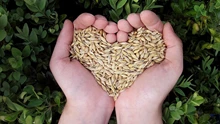
Indian gooseberry, or amla, is sometimes referred to as Nelli. It is popular for having strong therapeutic qualities. Its fruits are used to make a variety of medications. Amla-derived medications are used to treat fever, sores, diarrhea, toothaches, and anemia. Amla's green fruits can also be used to make pickles.
Amla is used to make a variety of products, including shampoo, hair oil, dye, teeth powder, and facial treatments. It is a spreading tree with globous branches that is typically 8 to 18 meters tall. Flowers come in two varieties, male and female, and are both greenish-yellow in hue. Fruits are 1.3–1.6 cm in diameter and have a light golden tint. Amla is grown extensively in Uttar Pradesh and Himachal Pradesh.
What type of soil is needed to cultivate Amla?
It can be cultivated in a wide range of soils because of its hardiness. It can grow in calcareous soil and is cultivated in slightly acidic to saline soils. The finest results are obtained when it is cultivated in rich, loamy soil with adequate drainage. Additionally, it can withstand slightly alkaline soil. It needs soil with a pH between 6.5 and 9.5. Don't cultivate Amla in dense soil.
Varieties of Amla:
-
Banarasi
-
Chakaiya
-
Francis
-
NA-4 (Krishna)
-
NA-5 (Kanchan)
-
NA-6
-
NA-7 (Promising variety)
-
NA-10
-
BSR-1 (Bhavanisagar)
Land Preparation:
It is necessary to have well-plowed and organic soil for the amla crop. Before planting, till the soil to a fine tilth. FYM and other organic fertilizers should be added in the soil. Then, 15cm × 15 cm-sized nursery beds with a 2.5 cm depth are prepared.
Sowing season of Amla:
July through September are the months when amla is grown. In Udaipur, cultivation takes place from January to February.
Spacing:
In May and June, farmers should sow budded seedlings at a spacing of 4.5 m by 4.5 m.
Planting Depth:
One-meter-square trenches are dug and kept exposed for 15 to 20 days so they can get enough light.
Approach To Sowing:
Budded seedlings should be transplanted onto the main field.
Rate of Seed:
Use 200 grams of seed per acre for the healthy development of the plant.
Treatment of Seeds:
Before planting, seeds are treated with gibberellic acid @200-500ppm for enhanced germination and to protect crops from soil-borne diseases and pests. After chemical processing, seeds are dried by air.
Fertilizer:
Apply 10 kg of FYM and thoroughly blend it with the soil before preparing the ground. Apply an N:P: K fertilizer dosage of 100 grams of nitrogen per plant, 50 grams of phosphorus per plant, and 100 grams of potassium per plant. One-year-old plants receive a starting fertilizer dose, which is steadily raised for the next 10 years. In January and February, a full dose of phosphorus and half doses of potassium and nitrogen are administered as a baseline dose. In August, the final half dosage is administered. According to the age and vigor of the trees, boron and zinc sulfate @100-500g are applied to sodic soils.
Weed Control:
To keep your fields weed-free, weed them frequently. Mulching is a powerful tool for managing soil weeds. Mulching is done in the summer from the tree's base up to 15 to 10 cm of the trunk.
Irrigation:
Irrigate every 15 days in the summer, and from October through December, give trees drip watering at a rate of 25 to 30 liters per day per tree. It does not need irrigation during the monsoon season. Irrigation should be avoided while flowers are blooming.
Harvesting:
The plant begins to produce after 7-8 years of planting. Fruits are harvested in February when they are at their greenest and contain the most ascorbic acid. Trees are vigorously shaken during harvest to get the fruits. Fruits get a drab greenish-yellow tint when they are fully grown. Mature fruits are used for processing and the extraction of seeds.













